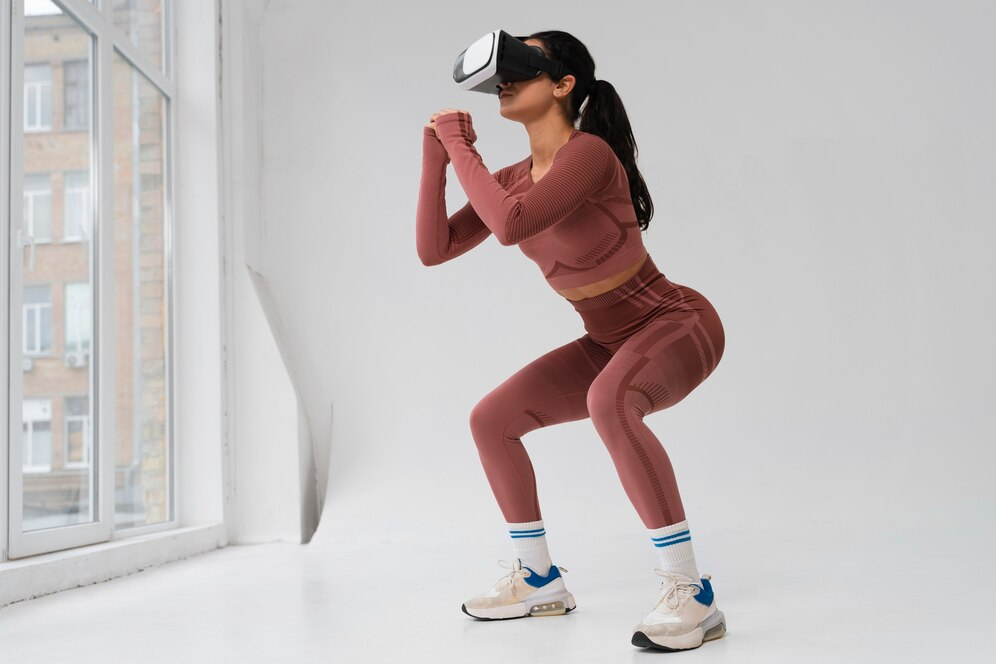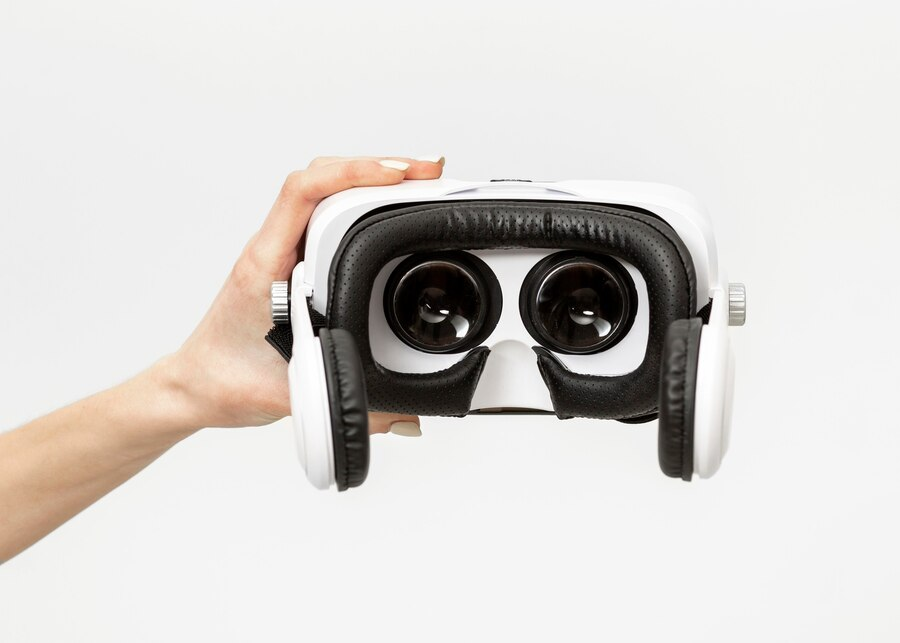Virtual Reality Exercise: Revolutionizing Your Fitness Journey
Video games have traditionally been seen as a sedentary activity; a person sits on a couch or chair for hours staring at a screen where the only movement has been fingers moving buttons. However, with the rise of virtual reality (VR), that doesn’t have to be true anymore. VR headsets create an immersive experience with a 3D-generated virtual world, ambient sounds that make you feel as if you’re really there, and when you move, your in-game avatar does, too. Since your body acts as the controller in this cutting-edge technology, companies and organizations have created apps and VR workouts to spice up your exercise routine. Virtual reality fitness is poised to be a great alternative to going to the gym and allows users to get the same amount of exercise, if not more, into their daily routine.
Are VR Games Good Exercise?
Absolutely! Virtual reality exercise is a great tool for people who struggle with the motivation of getting started on their fitness journey or for people who may be bored or burned out by workouts at the gym. VR games force you to be active in order to control the in-game character, which means that exercise is required for a fully immersive gaming experience.
When you pair a headset with VR exercise apps like Supernatural, FitXR, and The Thrill of the Fight, you can have fun in the comfort of your own home while also getting some exercise in. Even games that aren’t primarily billed as exercise games still require quite a bit of exercise involved.
The VR Health Institute has a VR Ratings page that covers how many calories per minute you might burn playing certain VR games and what kind of exercise in a gym that it’s equivalent to. VR fitness apps prove that gaming doesn’t have to be a sedentary activity for anybody. When you wear your virtual reality headset, you can get your workout in while you enjoy immersive and interactive virtual worlds.
The world of fitness is constantly evolving, and the latest trend making waves is virtual reality exercise. This exciting fusion of technology and physical activity is transforming how we think about workouts, making them not only more engaging but also more effective. Let’s dive into the realm of virtual reality exercise, exploring its benefits, how it works, and answering some common questions about this modern approach to fitness.
What is Virtual Reality Exercise?

Virtual reality exercise combines the immersive environment of virtual reality (VR) with physical activity, creating a simulated world where exercise can be both fun and effective. Using VR headsets and sometimes additional equipment, users can participate in a variety of workouts, from boxing and cycling to yoga and dance. This innovative approach to fitness makes workouts feel like a game, keeping participants motivated and excited.
The Benefits of Virtual Reality Exercise
The unique combination of virtual reality and exercise offers several impressive benefits:
Enhanced Motivation
Virtual reality exercise transcends traditional workout methods by incorporating immersive, game-like environments. This approach significantly enhances motivation, as participants are often so engaged in the virtual experience that they might not even feel like they’re exercising. Below are key aspects of how VR boosts motivation:
- Gamification: Many VR fitness programs include elements such as points, levels, and rewards that encourage users to keep progressing.
- Interactive Challenges: Participants can compete against themselves or others, adding a competitive element that is often lacking in solo exercise routines.
Improved Mental Health
The immersive quality of virtual reality can greatly impact mental well-being. Engaging in a virtual space allows individuals to escape from daily stressors and immerse themselves in a calming environment. Here’s how VR exercise contributes to improved mental health:
- Distraction Technique: By diverting attention from real-world issues, VR can reduce the perception of effort and discomfort during exercise, making the session less daunting.
- Endorphin Release: Like any physical exercise, VR workouts stimulate the release of endorphins, the body’s natural mood lifters, which play a crucial role in reducing stress and anxiety.
Accessibility
Virtual reality exercise offers a viable fitness solution for individuals who may face barriers to traditional gym access. This is particularly beneficial for:
- Individuals with Physical Limitations: People with mobility issues can engage in adapted exercises that meet their specific needs without leaving home.
- Remote or Isolated Areas: Residents in locations far from gym facilities can benefit from the full spectrum of exercise options that VR provides.
Setting up a VR exercise system at home is generally straightforward, requiring minimal equipment aside from the VR headset and compatible software.
Diverse Workout Options
One of the standout features of virtual reality exercise is the vast array of available workout types. Users can choose from:
- High-Intensity Interval Training (HIIT): Fast-paced sessions that are designed to increase heart rate quickly and effectively.
- Yoga: Sessions that focus on flexibility, balance, and relaxation, which can also incorporate scenic virtual environments.
- Dance Classes: Energetic and fun workouts that combine music and choreographed movements to boost cardiovascular health.
Most VR fitness platforms allow users to customize their workouts based on personal fitness levels and preferences, ensuring a tailored and enjoyable exercise regimen.
How Does Virtual Reality Exercise Work?

Virtual reality exercise utilizes VR technology to create interactive environments that can simulate real-life workout settings or fantastical landscapes. Here’s a typical setup:
- VR Headset: The cornerstone of virtual reality exercise, the VR headset delivers visual and audio stimuli to the user, creating an immersive experience akin to being present in a different environment altogether. Modern VR headsets, such as the Oculus Rift or HTC Vive, boast high-resolution displays and advanced tracking systems, enhancing the realism of the virtual world.
- Controllers: Handheld controllers play a crucial role in virtual reality exercise by allowing users to interact with and manipulate objects within the virtual environment. These controllers track movements accurately, enabling users to engage in a variety of activities, from boxing to archery, depending on the chosen exercise program.
- Optional Accessories: Some virtual reality exercise programs may incorporate additional accessories to augment the workout experience. These accessories can range from resistance bands and weighted gloves to stationary bikes and treadmills, adding a physical dimension to the virtual workout.
Incorporating Virtual Reality Exercise into Your Routine
Here are a few tips to get started with virtual reality exercise:
- Choose the Right Equipment: Invest in a quality VR headset that is comfortable and has good motion tracking.
- Select Suitable Programs: Explore different VR exercise programs to find ones that fit your fitness level and interests.
- Set Up a Safe Space: Ensure you have enough room to move around safely without bumping into furniture or walls.
- Schedule Regular Sessions: Like any fitness program, consistency is key. Try to incorporate VR exercise into your routine several times a week.
Conclusion
Virtual reality exercise is not just a fad—it’s a forward-thinking way to make fitness more accessible, enjoyable, and effective. Whether you’re looking to spice up your workout routine or find new motivation for staying active, virtual reality exercise offers a fresh and exciting path to achieving your fitness goals. With the technology continuing to improve, the future of VR in fitness looks bright and promising.
FAQ
Yes, virtual reality exercise can be an effective tool for weight loss. It combines cardiovascular and strength training exercises that can burn calories and build muscle.
It’s important to consult with a healthcare provider before starting any new exercise program, including virtual reality exercise, especially if you have health issues.
While some people may experience motion sickness from VR, many modern VR systems have features designed to minimize this risk. Starting with shorter sessions can also help your body adjust.
Virtual reality exercise is suitable for all ages, but it’s particularly popular among younger adults who are familiar with VR technology.